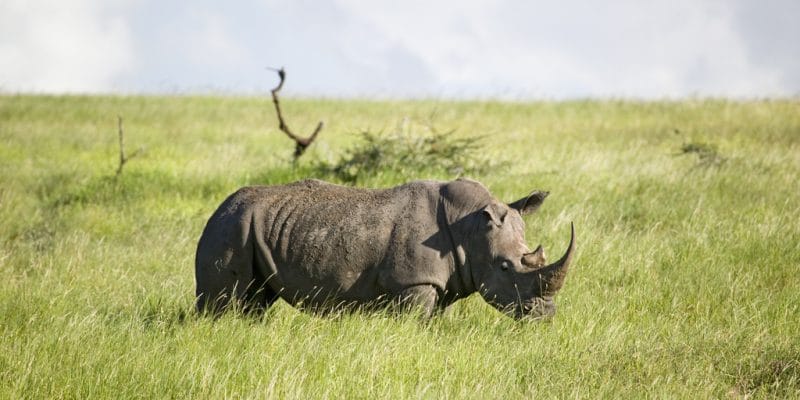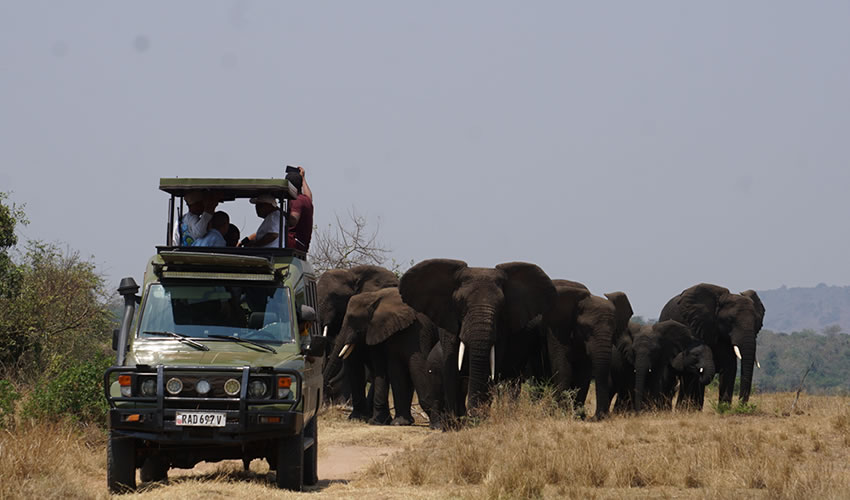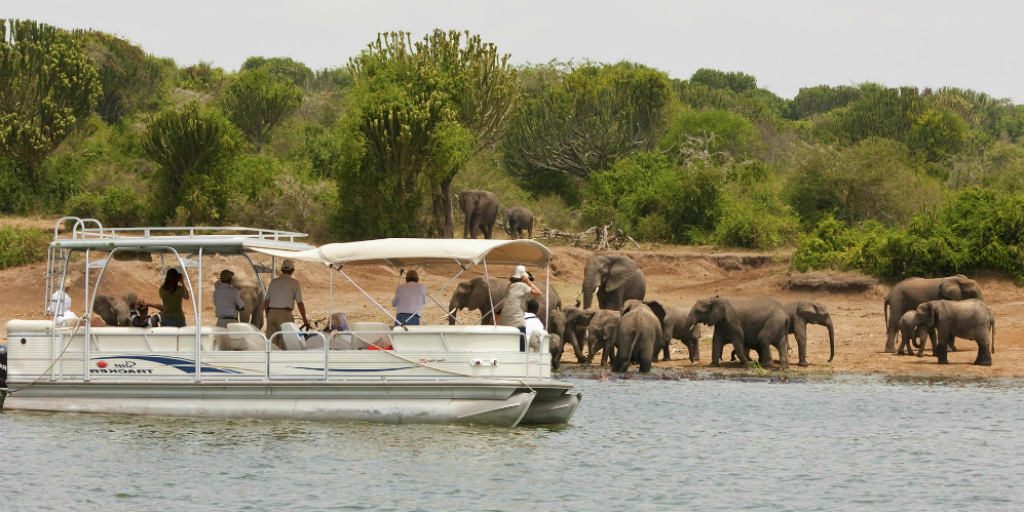The Big 5 Animals In Rwanda
The Big 5 Animals In Rwanda: Only Akagera National Park, located in the Kibungu district of northeastern Rwanda, is home to Rwanda’s Big 5 mammals. The big five creatures of Rwanda—the African elephant, African buffalo, rhinoceros, African leopard, and lion—only exist in this park. Blessed with numerous national parks and game reserves, Rwanda offers a plethora of tourism attractions, including untamed wildlife, relief features such as lakes and rivers, and, of course, the country’s 1000 hills, which provide breathtaking vistas for safaris and tours.
Akagera did not initially possess all five of the major reasons because during the Rwandan genocide of 1994, many animals were killed there, and from 1990 to 1994—when the genocide peaked in the country—it served as a battlefield for the Rwandan Patriotic Front. There was a lot of strain placed on the park, and it suffered. The Rwanda Development Board, in collaboration with a non-profit organization, set out to restore the health of Akagera National Park after numerous animals, including the lions and rhinos, were killed. Their efforts were successful, as the park is now recognized as the only one in Rwanda where the Big Five can be seen.

The Five Eastern Black Rhinos
It is thought that the five Eastern Black rhinos who were relocated were descended from rhinos that were abducted in their early years and sent to European zoos. They were moved from the Czech Republic (Europe) to the Akagera National Park in Rwanda. Visitors should go to Akagera National Park to witness the rhinos settling into their new, rightly their habitat. Five Eastern black rhinos were transferred to the park on June 23, 2019, after being imported from Europe.
The rhinos—two males, Mandela and Olmoti, and three females, Manny, Jasiri, and Jasmina—travelled 6000 kilometers, which is quite taxing and wearisome, but they adapted rather well. The rhinos were first housed in bomas, which are wooden enclosures, before being moved into larger enclosed spaces and eventually released into the park to live among other animals.
The eastern black rhino relocation came after the reintroduction of eighteen black rhinos that were moved from South Africa to Akagera National Park. With more animals, it has made it easier to see wildlife because, in the past, it was difficult to spot animals in the park due to poaching by locals and the park’s use as a battlefield in 1990 and 1994.
The reintroduction of lions in Akagera

When compared to other lion-abiding nations, the park’s estimated 300 lions were a great number in the early 1990s. However, after the park’s boundaries were lowered, a portion of the land was given to Rwandans who had fled the genocide to Uganda and the Congo. The government of Rwanda granted the people access to a portion of the park’s property when the Rwandans returned from their exile, bringing with them vast herds of cattle totaling over 4,000. This created pressure on the area for both humans and animals. It should be noted that animals were only allowed to graze in a limited area when they first arrived in the park. This caused the animals to move to their former grazing grounds, which were now inhabited by people and their herds of cattle. This resulted in the destruction of the farmers’ crops and the deaths of their animals; for example, the lions killed their domestic animals, such as goats and cows, which irritated the farmers, who then poisoned the animals, killing many of the lions and causing the park to become extinct by 2002.
2015 saw the reintroduction of five female and two male lions from South Africa, for a total of seven lions, to Akagera National Park in an effort to make up for the park’s losses. This effort was spearheaded by the African Parks non-profit organization in South Africa and the Rwanda Development Board.
Since they were introduced to the park, the translocated lions have blended in rather well, and as a result, no one has been lost or killed. This has contributed to the success of conservation efforts, which has resulted in the birth of fifteen cubs. The population is still growing as a result of the favorable, stable environment that provides a plenty of prey for them to eat, as well as the effective government policy that forbids poaching in the affected areas by conducting frequent patrols to make sure that there is no poaching there. The introduction of the animals has led to a rise in tourism and visitor numbers, which over time will support the park’s attractions’ long-term viability.
All five of the big five species in Kagera National Park have been restored thanks to the introduction of lions and rhinos, which makes it simple for visitors who wish to witness all five of the big five at once in the park.
The Big 5 Animals and Poaching in Akagera National Park
The park is no stranger to poaching operations, which are led by the local communities who are interested in the animal products. Some of the Big 5 animals are poached for bushmeat, while rhinos are famous for their horns and elephants are poached for their ivory, among other products.
Due to the events that took place in the early 1990s and early 2000s, the park’s lion and rhino populations went extinct as a result of the killing of several animals. This has prompted the government to step up efforts to stop poaching. A variety of steps have been taken to guarantee the safety of the animals, including the deployment of a team of park rangers who patrol the park every day to make sure that no animal is in danger. The team’s efforts have paid off, as seen by the numerous poachers who have been apprehended and imprisoned as well as the destruction of poachers’ snares, which can kill both young and old animals, including the largest living mammal, elephants. This has guaranteed wild animals’ safety.
In order to prevent the animals from entering the nearby communities, where they may be viewed as threats and ultimately killed, an electric fence has also been built around the park. Sensitization of the local community against poaching has also made it possible for the park to ensure the safety of the animals in that it has reduced community involvement in poaching once the locals are informed about the advantages of the wildlife, which include the generation of income that promotes the development of local communities through infrastructure improvements and employment opportunities. The lengthy term has made it possible for the park’s animal inhabitants to survive.
Since there are now more animals in the park, visitors can engage in a variety of activities to boost their chances of seeing the various Big 5 creatures, which has increased visitor satisfaction. due to the numerous other animal species that are visible, such as giraffes, impalas, zebras, oribis, hyenas, and so forth.
Game Drives Akagera National Park
One of the most satisfying experiences for a visitor hoping to see the Big Five is taking a game drive around the park. A wide variety of animals as well as other sights with breathtaking vistas can be viewed during game drives. Despite its tiny size, the park provides visitors who participate in its activities with a fulfilling experience. Lions and leopards are typically spotted around locations where herbivores are typically observed grazing or beneath the acacia trees seeking shade. These normally prey on impalas, zebras, and other animals. If tourists are lucky, they may witness a lion stalking and devouring its victim. Alongside zebras, elephants, and many other herbivores, rhinos can also be observed grazing.

For tourists who are interested in witnessing the big cats of the Big Five animals during their hunt for prey, the nocturnal game drives or the night game drives are the best options. During these drives, a variety of big cats, including lions and leopards, can be seen, providing rewarding experiences because during the night their hunt for prey is easy because of the surprise attacks that are carried out when most of the animals are sleeping. During the night game drive, you can also see serval cats, hyenas, and other species.

Boat rides at the National Park of Akagera
There are several bodies of water throughout the park, including lakes and wetlands. For those interested in the activity, the park’s well-known Lake Ihema is open. Some of the Big Five that are visible on the boat ride include the buffalos, who are water-obsessed, and the elephants, who are observed drinking from the water to satiate their thirst. Crocodiles are among the other animal species that may be seen. They can be seen sunbathing or attempting to grab food in the water. For instance, zebras, which come to the lakes to obtain water, can be caught by the crocodiles when they are in the water.
Because Akagera National Park is easily accessible, visitors shouldn’t be deterred from visiting in order to witness the iconic “big five”—the rhino, elephant, lion, leopard, and buffalo. from Rwanda‘s main city of Kigali. The 114-kilometer park takes two hours and thirty minutes to visit for a visitor.
Along the route, there are a variety of sights to witness, including the lovely scenery made up of several hills, the pleasant weather, and Rwandans that can be seen traveling to the park. When visitors arrive at the park, a new and intriguing region will be revealed to them, along with the area’s stunning scenery, such as the various wetlands and bodies of water like Lake Shanaki and Lake Ihema, which draw a variety of water birds searching for food.
Along with the Big Five, the park is home to a variety of other animal species, including zebras, giraffes, impalas, duikers, Oribi, spotted hyenas, crocodiles, hippos, waterbucks, bushbucks, topis, and many more bird species, including Hamerkop, Caruthers’s cisticola, pied crow, black-headed weaver, fan-tailed widow bird, violet’s black weaver, and long-crested Eagle. A visitor who is interested in seeing the Big Five can also partake in a variety of other activities, such as sport fishing and birding, which can enhance their visit.
The most fulfilling encounter with the big five creatures of the wild will be visiting Akagera National Park, as it will not only allow visitors to view the various big five species but also provide them with the chance to participate in and observe additional activities and attractions.



